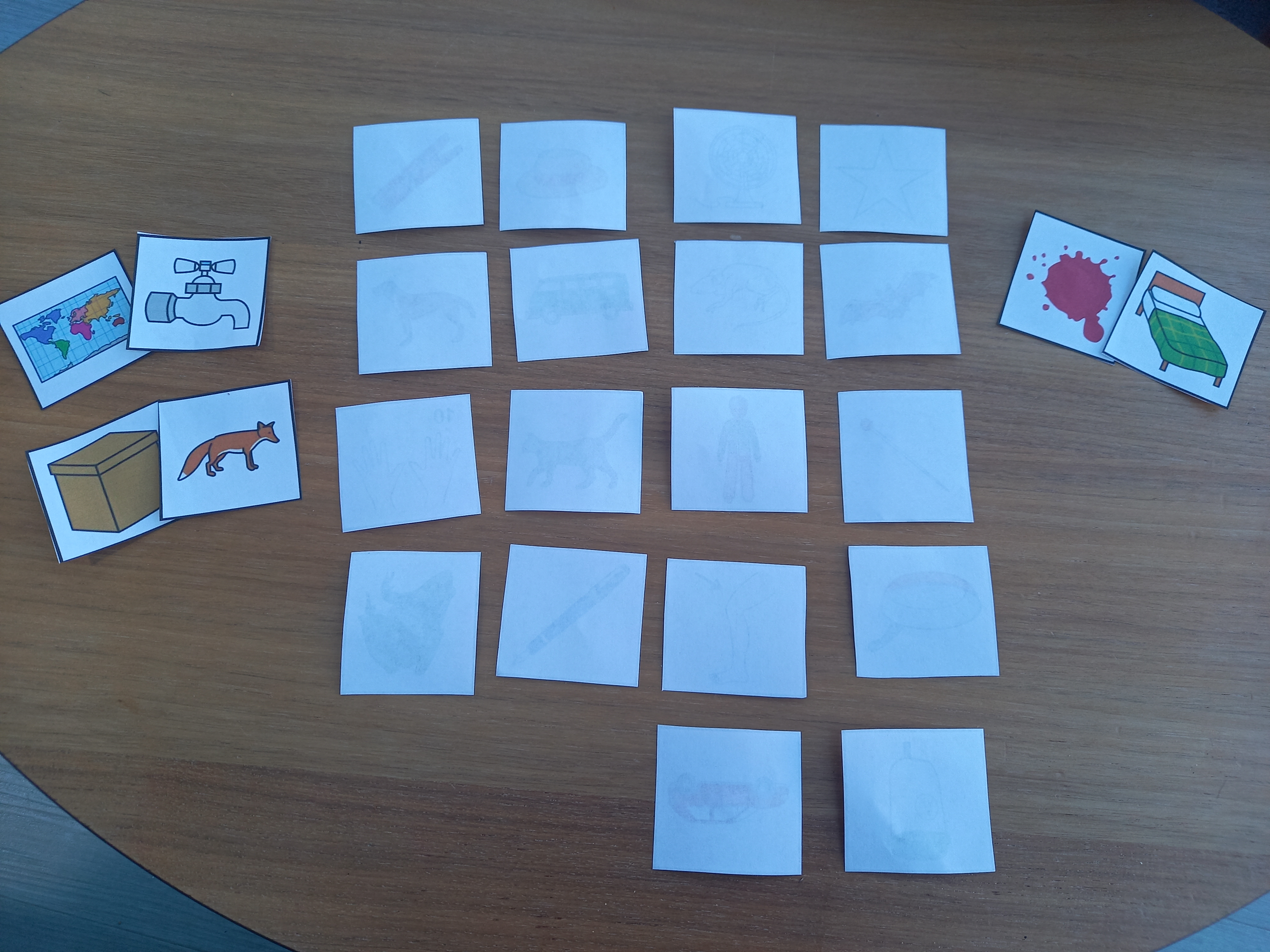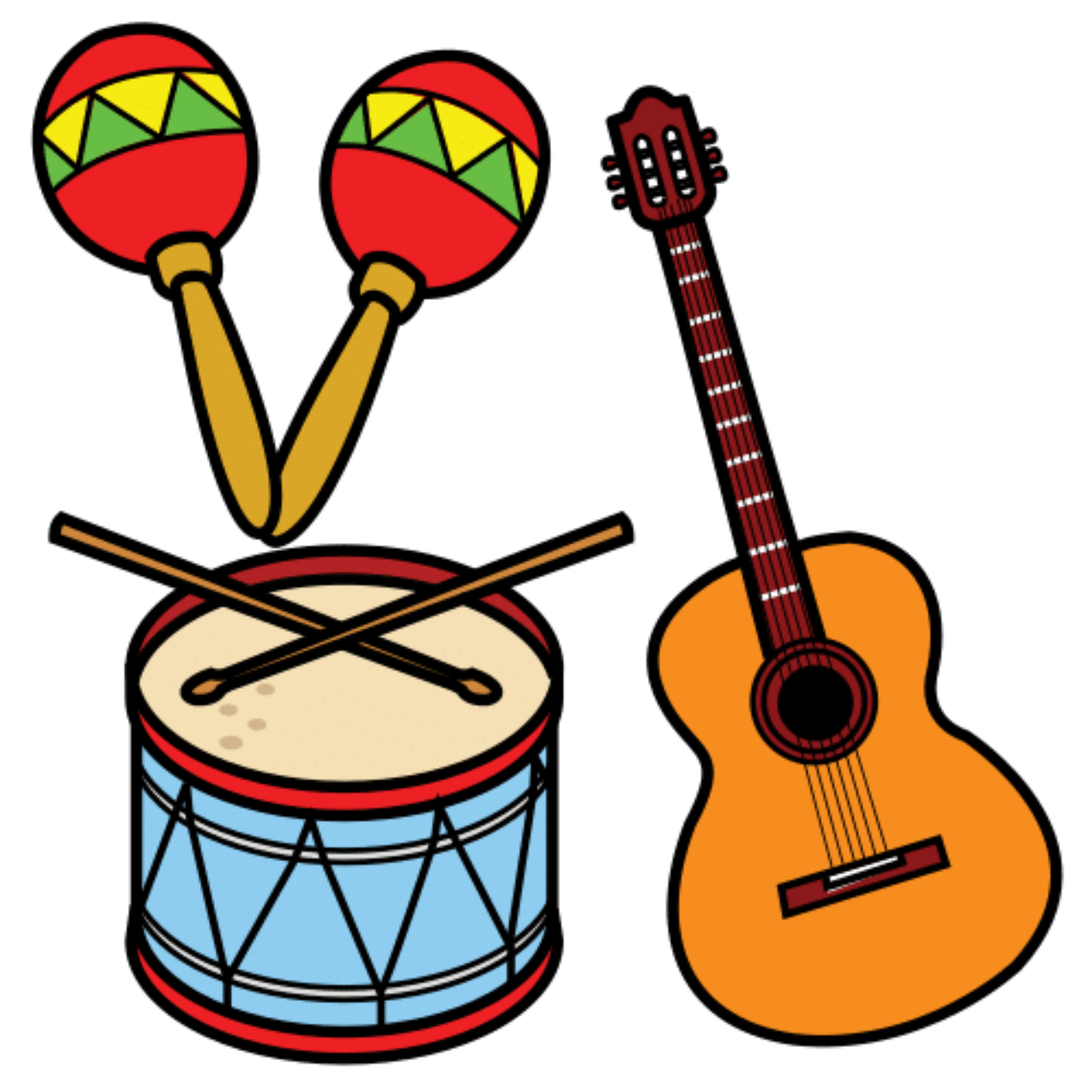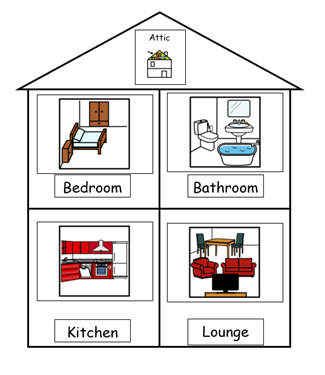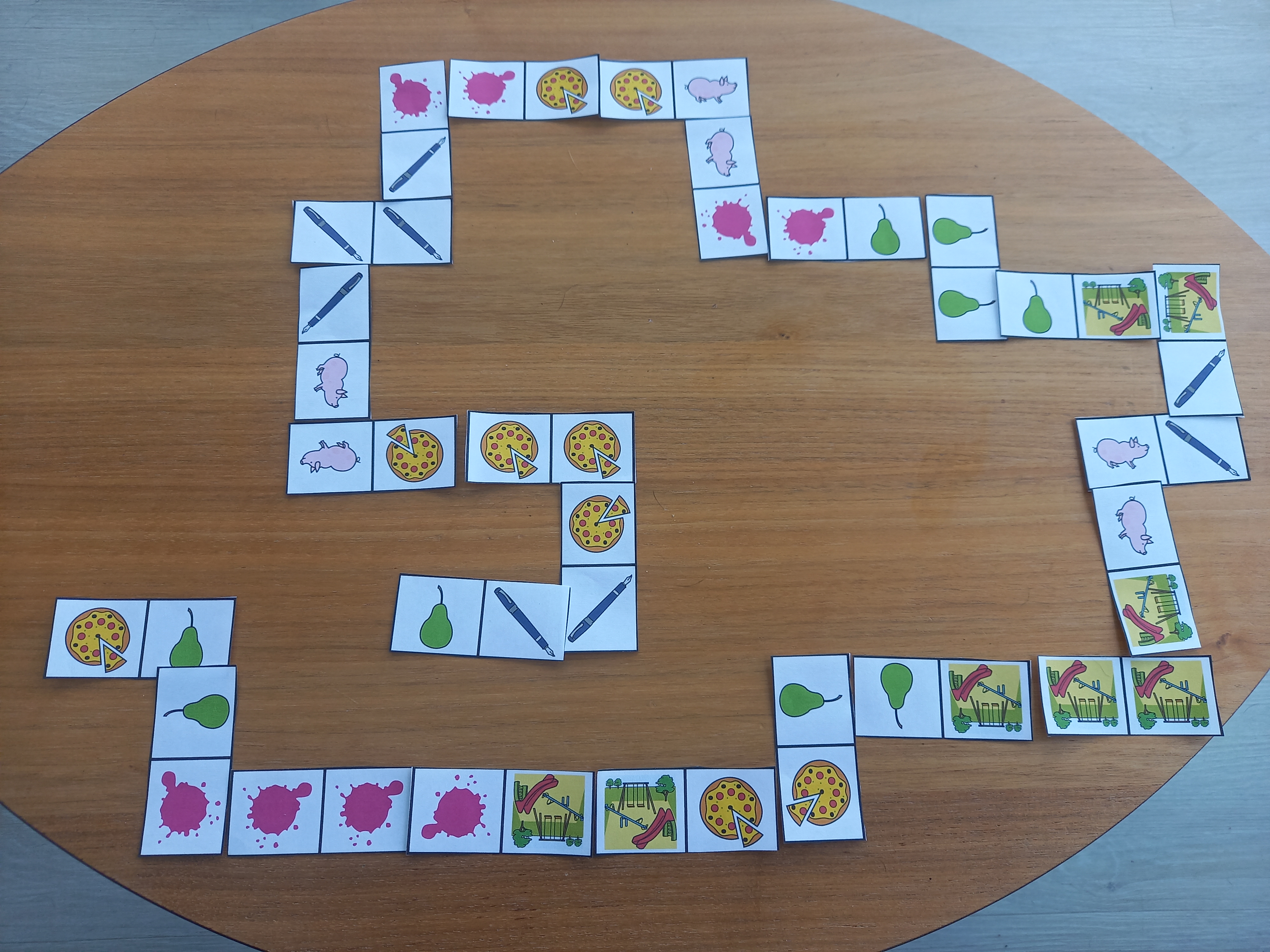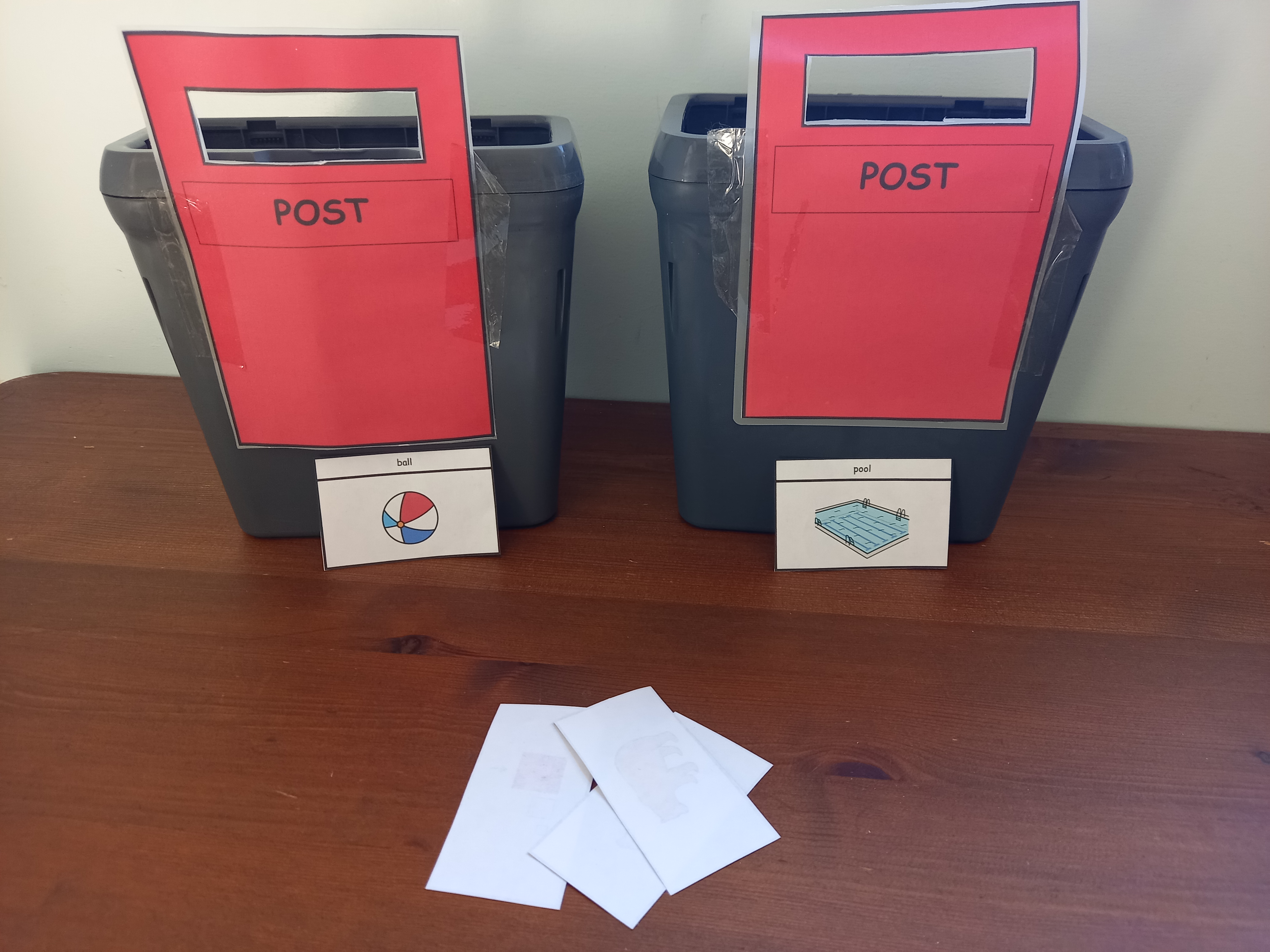Search
User login
Topic “Activities”
This sheet contains activities.
Activities to develop early turn taking skills
| Activity/strategy name and materials required | How to do the activity | Key principles for doing the activity and comments |
|---|---|---|
| Ball Roll - a ball |
| To extend this activity, you could add extra people to roll the ball to (small group).
|
Activities to identify when words rhyme
| Activity/strategy name and materials required | How to do the activity | Key principles for doing the activity and comments |
|---|---|---|
| Rhyming Pairs |
|
|
| Rhyme Sort |
Finding items/objects from subcategories
| Activity/strategy name and materials required | How to do the activity | Key principles for doing the activity and comments |
|---|---|---|
| Subcategory Dice - Printable subcategory dice templates
- Printable subcategory cards
|
| If your child is finding this task challenging, you can help by searching for an item together. It may also be useful to visit activities working on sorting items into categories - click here.
If your child is able to do this activity, when they select a card, you could ask them to think of another item that belongs to that subcategory but is not in the picture cards. |
Activities to develop finding items from different categories
| Activity/strategy name and materials required | How to do the activity | Key principles for doing the activity and comments |
|---|---|---|
| Category Dice |
| If your child is finding this task challenging, you can help by searching for an item together. It may also be useful to visit activities working on sorting items into categories - click here.
If your child is able to do this activity, when they select a card, you could ask them to think of another item that belongs to that category but is not in the picture cards.
|
Activities to develop understanding of the concepts noisy and quiet
| Activity/strategy name and materials required | How to do the activity | Key principles for doing the activity and comments |
|---|---|---|
| Musical Instruments - a selection of musical instruments - Click here for ideas of how to use household items to make musical instruments | 1. Each person chooses a musical instrument. 2. If you wish, you can use symbols alongside the words you use. Talk about noisy sounds and quiet sounds. Practice making these with your musical instrument. 3. Swap musical instruments and make noisy/quiet sounds again. 4. Play a game where you take turns at being the conductor and give the instructions of noisy or quiet for the others to follow.
| If your child is finding it challenging to grasp the difference between noisy and quiet. Choose one concept first, e.g. noisy, and use 'not noisy' as the alternative. Once you are confident that your child understands this concept you can start to teach the concept of quiet. |
| Listening Walk | If your child is finding it challenging to grasp the difference between noisy and quiet. Choose one concept first, e.g. noisy, and use 'not noisy' as the alternative. Once you are confident that your child understands this concept you can start to teach the concept of quiet. | |
| Noisy/quiet sorting game | If your child is finding it challenging to grasp the difference between noisy and quiet. Choose one concept first, e.g. noisy, and use 'not noisy' as the alternative. Once you are confident that your child understands this concept you can start to teach the concept of quiet. |
Using a target sound in a sentence
| Activity/strategy name and materials required | How to do the activity | Key principles for doing the activity and comments |
|---|---|---|
| Story String - A copy of picture cards containing your child's target sound - click here for printable word cards. - String or rope to make a washing line. - Pegs
| 1. Cut out the pictures containing the target sound. 2. Ask your child to choose 4- 5 pictures and peg them on the line. 3. The first person uses the first picture on the line to make up a sentence, e.g. 'the cat (taget word) went in the garden'. 4. The second person add to the story by linking another sentence with the next target word, e.g. 'and then dug up all the carrots (target word)'. 5. You can make the stories as silly or as funny as you like. 6. You can make errors to see if your child picks up on them, e.g. I went to the shops and brought a car, tat (cat)'. 7. If your child makes an error you can make them aware of this by repeating back, e.g. 'Is it dun or sun?'. 8. You could make a video or recording of your story to play back and listen.
| If your child is able to do this activity you might like to try moving on to (add link to generalisation activities)
If your child is finding this activity challenging, move back to using games that focus on saying the target sound in a small phrase. Once your child is confident at saying the target sounds in a phrase, try this activity again. |
| I went shopping... - A copy of picture cards containing your child's target sound - click here for printable word cards.
| If your child is able to do this activity you might like to try moving on to (add link to generalisation activities)
If your child is finding this activity challenging, move back to using games that focus on saying the target sound in a small phrase. Once your child is confident at saying the target sounds in a phrase, try this activity again. | |
| Sound Dice Race - Sound dice race for the sound you are working on - click here to print - A dice - Counters/stickers | If your child is able to do this activity you might like to try moving on to (add link to generalisation activities)
If your child is finding this activity challenging, move back to using games that focus on saying the target sound in a small phrase. Once your child is confident at saying the target sounds in a phrase, try this activity again. | |
| Barrier Games - Barrier games resources for your target sounds - click here to see available sounds - Something that can be used as a barrier between the players so you are unableto see the other players pictures, e.g. a book, folder. | You could reduce the amount of pictures you are using, e.g. only give three sentences before you check. | |
| Sentence Story Dice |
Using a target sound in a single word - activities/games set 3
| Activity/strategy name and materials required | How to do the activity | Key principles for doing the activity and comments |
|---|---|---|
| Fishing - Words containing your child's target sound - click here for printable word cards. - Paper clips - Stick - String - Magnet - Paper fish. Optional printable fish template available by clicking here. |
| If your child is able to do this activity you might like to try moving on to: saying a small phrase with the target word in, e.g target word = 'car', your phrase could be, 'a red car'. Some phrase level activities can be found by clicking here.
If your child is finding this activity challenging, try the following steps: - If your child finds it challenging to say the sound, praise them for trying and say the word back with the sound used correctly for them to hear. - Talk about the sound the word starts with, e.g. 'cat' starts with a 'c' sound. - Have a go at breaking the word up for the child to copy, e.g. 'let's try and say this together, 'c' 'at'. |
| Skittles - Words containing your child's target sound - click here for printable word cards. - A set of skittles - you could also use empty plastic bottles. - Ball | If your child is able to do this activity you might like to try moving on to: saying a small phrase with the target word in, e.g target word = 'car', your phrase could be, 'a red car'. Some phrase level activities can be found by clicking here.
If your child is finding this activity challenging, try the following steps: - If your child finds it challenging to say the sound, praise them for trying and say the word back with the sound used correctly for them to hear. - Talk about the sound the word starts with, e.g. 'cat' starts with a 'c' sound. - Have a go at breaking the word up for the child to copy, e.g. 'let's try and say this together, 'c' 'at'. | |
| Matching Pairs - Words containing your child's target sound x 2 copies - click here for printable word cards. | If your child is able to do this activity you might like to try moving on to: saying a small phrase with the target word in, e.g target word = 'car', your phrase could be, 'a red car'. Some phrase level activities can be found by clicking here.
If your child is finding this activity challenging, try the following steps: - If your child finds it challenging to say the sound, praise them for trying and say the word back with the sound used correctly for them to hear. - Talk about the sound the word starts with, e.g. 'cat' starts with a 'c' sound. - Have a go at breaking the word up for the child to copy, e.g. 'let's try and say this together, 'c' 'at'. | |
| Lotto/Bingo | If your child is able to do this activity you might like to try moving on to: saying a small phrase with the target word in, e.g target word = 'car', your phrase could be, 'a red car'. Some phrase level activities can be found by clicking here.
If your child is finding this activity challenging, try the following steps: - If your child finds it challenging to say the sound, praise them for trying and say the word back with the sound used correctly for them to hear. - Talk about the sound the word starts with, e.g. 'cat' starts with a 'c' sound. - Have a go at breaking the word up for the child to copy, e.g. 'let's try and say this together, 'c' 'at'. | |
| Hide and Seek - Words containing your child's target sound - click here for printable word cards. | If your child is able to do this activity you might like to try moving on to: saying a small phrase with the target word in, e.g target word = 'car', your phrase could be, 'a red car'. Some phrase level activities can be found by clicking here.
If your child is finding this activity challenging, try the following steps: - If your child finds it challenging to say the sound, praise them for trying and say the word back with the sound used correctly for them to hear. - Talk about the sound the word starts with, e.g. 'cat' starts with a 'c' sound. - Have a go at breaking the word up for the child to copy, e.g. 'let's try and say this together, 'c' 'at'. |
Using a target sound in a small phrase
| Activity/strategy name and materials required | How to do the activity | Key principles for doing the activity and comments |
|---|---|---|
| Where in the house? Barrier Game - 2 copies of words containing your child's target sound - click here for printable word cards. - 2 x copies of house game board
|
| If your child is able to do this activity you might like to try moving on to: saying a longer sentence with the target word in, e.g target word = 'carrot', your sentence could be, 'put the carrot in the kitchen'. Click here for activities using target sounds in sentences.
If your child is finding this activity challenging, move back to using games that focus on saying the target sound in a single word. Once your child is confident at saying the target sounds in a single word, try this activity again. Click here for single word activities set 1. |
| Speech sound barrier game - 2 x page of words for your target speech sound or - 2 x page of minimal pairs pictures for your target speech sound - A barrier to put up between you and your child - Some counters in a variety of colours- 2 of each counter. | Using the minimal pairs pictures will be harder as your child will have to work out which word to use, e.g. tea/key. If your child is able to do this activity you might like to try moving on to: saying a longer sentence with the target word in, e.g target word = 'carrot', your sentence could be, 'put the carrot in the kitchen'. Click here for activities using target sounds in sentences.
If your child is finding this activity challenging, move back to using games that focus on saying the target sound in a single word. Once your child is confident at saying the target sounds in a single word, try this activity again. Click here for single word activities set 1. |
Listening to words in stories and work out whether they are correct/incorrect
| Activity/strategy name and materials required | How to do the activity | Key principles for doing the activity and comments |
|---|---|---|
| Puppet Story - Puppet - Story book - Stickers |
|
Using a target sound in a single word - activities/games set 1
| Activity/strategy name and materials required | How to do the activity | Key principles for doing the activity and comments |
|---|---|---|
| Sound Dominoes |
| If your child is able to do this activity you might like to try moving on to: saying a small phrase with the target word in, e.g target word = 'car', your phrase could be, 'a red car'. Some phrase level activities can be found by clicking here.
If your child is finding this activity challenging, try the following steps: - If your child finds it challenging to say the sound, praise them for trying and say the word back with the sound used correctly for them to hear. - Talk about the sound the word starts with, e.g. 'cat' starts with a 'c' sound. - Have a go at breaking the word up for the child to copy, e.g. 'let's try and say this together, 'c' 'at'. |
| 4 in a Row! - Printable template with playing board and counters. - Words containing your child's target sound - click here for printable word cards. | If your child is able to do this activity you might like to try moving on to: saying a small phrase with the target word in, e.g target word = 'car', your phrase could be, 'a red car'. Some phrase level activities can be found by clicking here.
If your child is finding this activity challenging, try the following steps: - If your child finds it challenging to say the sound, praise them for trying and say the word back with the sound used correctly for them to hear. - Talk about the sound the word starts with, e.g. 'cat' starts with a 'c' sound. - Have a go at breaking the word up for the child to copy, e.g. 'let's try and say this together, 'c' 'at'. | |
| Washing Line - Strong string or rope - pegs - Words containing your child's target sound - click here for printable word cards. - small bag to put picture cards in | If your child is able to do this activity you might like to try moving on to: saying a small phrase with the target word in, e.g target word = 'car', your phrase could be, 'a red car'. Some phrase level activities can be found by clicking here.
If your child is finding this activity challenging, try the following steps: - If your child finds it challenging to say the sound, praise them for trying and say the word back with the sound used correctly for them to hear. - Talk about the sound the word starts with, e.g. 'cat' starts with a 'c' sound. - Have a go at breaking the word up for the child to copy, e.g. 'let's try and say this together, 'c' 'at'.
| |
| What's in the bag? Guessing Game - Words containing your child's target sound - click here for printable word cards. - bag | If your child is able to do this activity you might like to try moving on to: saying a small phrase with the target word in, e.g target word = 'car', your phrase could be, 'a red car'. Some phrase level activities can be found by clicking here.
If your child is finding this activity challenging, try the following steps: - If your child finds it challenging to say the sound, praise them for trying and say the word back with the sound used correctly for them to hear. - Talk about the sound the word starts with, e.g. 'cat' starts with a 'c' sound. - Have a go at breaking the word up for the child to copy, e.g. 'let's try and say this together, 'c' 'at'. | |
| Kim's Game - Words containing your child's target sound - click here for printable word cards. - A blanket or tea towel | If your child is able to do this activity you might like to try moving on to: saying a small phrase with the target word in, e.g target word = 'car', your phrase could be, 'a red car'. Some phrase level activities can be found by clicking here.
If your child is finding this activity challenging, try the following steps: - If your child finds it challenging to say the sound, praise them for trying and say the word back with the sound used correctly for them to hear. - Talk about the sound the word starts with, e.g. 'cat' starts with a 'c' sound. - Have a go at breaking the word up for the child to copy, e.g. 'let's try and say this together, 'c' 'at'. |
Hearing the difference between sounds in words (auditory discrimination)
| Activity/strategy name and materials required | How to do the activity | Key principles for doing the activity and comments |
|---|---|---|
| Post it! Materials: - Copy of printable minimal pairs words for the target sounds – if you are unable to print, you could draw some pictures using the pairs of words on the list. - 2 boxes/containers – you could make your own post boxes using this template and sticking it to a cardboard box. - Paper cut into envelope shapes or click here for a printable template. | Instructions: 1. Choose one pair of words, e.g. ‘door’ and ‘saw’ and attach one to the front of each box/container. 2. Explain to your child that each of the boxes has a word with a different sound. You are going to say a word and they have to post a letter into the right box. 3. Show your child how to do this. 4. Say the words in a random order so your child has to listen to the difference between the word and choose the correct one. 5. If your child gets the wrong word, talk it through with them and show them which sound you used. 6. Swap minimal pairs after a while, e.g. change ‘door’ and ‘saw’ to ‘duck’ and ‘suck’.
| |
| Racing Cars - 2 x pieces of paper and pen - 2 x toy cars or vehicles - Copy of printable minimal pairs words for the target sounds – if you are unable to print, you could draw some pictures using the pairs of words on the list. | ||
| Block Towers - some wooden/plastic building blocks. - Copy of printable minimal pairs words for the target sounds – if you are unable to print, you could draw some pictures using the pairs of words on the list.
|
For child to look at their peers and use their names when in a turn taking activity
| Activity/strategy name and materials required | How to do the activity | Key principles for doing the activity and comments |
|---|---|---|
| Play a game with adult supervision Marble run; Bricks for sharing building and knocking down a tower; Any lotto game where pictures have to be matched; Skittles; Pushing cars down a run/pipe. pictures of children taking part |
| Keep turns short and snappy so children don't need to wait too long. Keep the time spent on the whole game short and snappy so children don't get bored. Support good waiting by saying "you are waiting..." sometimes the child will find it easier to wait if they have something to hold while they wait - this could be a waiting symbol.
|
Activities to develop early choice making between two items
| Activity/strategy name and materials required | How to do the activity | Key principles for doing the activity and comments |
|---|---|---|
| Choosing Between Toys - Desired and undesired toys, other objects | To begin with hold out a liked toy and a neutral object like a piece of paper - encourage the child to reach for what they want. When they can do this consistently hold out two toys - encourage the child to reach to choose. | Vary which side you hold the toys out to ensure that the child doesn't always reach in one direction. Occasionally, when the child has been reaching for what they want swap the toys around and see whether they still reach for the same one. Always label what they choose for example "snake ... you want the snake...". |
| Choosing Between Food - Two types of food | As above Always label what the child chooses or reaches for. For example: 'Oh, rice, mmmm' Make appropriate sounds like 'mmmmmm', 'yum yum' etc. |
Use a simple conversational structure over three turns
| Activity/strategy name and materials required | How to do the activity | Key principles for doing the activity and comments |
|---|---|---|
| How are you? | Two turns
Three turns Once two turns is mastered as above, move to three turns:
| For the three turns part, if a student makes a different response to the answer to their question than one of the possible responses on the prompt cards then that's fine as long as it is relevant. Otherwise, prompt them to make a response from one of the prompt cards. You could show different prompt cards, or you could show just one prompt card for the response in the last turn. |
| What have you been doing? | For this activity, a student using a contraction of the question is also fine (e.g. "What doing"), this activity is about creating turns in a conversation. | |
| Topic of interest - what have you got? Prompt cards for a "what have you got" conversation Set of pictures (e.g from Google) relating to a topic of interest to the student - e.g. Tesco, the park, Eastenders. |
Simple topic maintenance
| Activity/strategy name and materials required | How to do the activity | Key principles for doing the activity and comments |
|---|---|---|
| My interests |
| |
| Topic introduction
| ||
| Talk about it
| Optional:
| |
| Likes and dislikes Something to record the students responses on (e.g. paper/pen) which can later be used as a prompt; Soft ball or beanbag. | To make it harder, you can go around again asking for favourite drinks - so that everyone now has to remember a food and a drink for each student when they pass the ball (e.g "Tim - (you like) carrot cake and tea"). You could use favourite games, favourite places to go, etc. instead. | |
| What have you done today? Way of recording students responses - e.g. paper/pen, whiteboard/marker; Soft ball or beanbag. |
Support Commtap to keep it online
Thank you for visiting Commtap.
Please read this message as it is extremely important.
- Visitor donations mean we can continue to host over 1,000 free activities to support speech, language, and communication development.
- Visitor donations mean we can continue to provide free resources to address a wide range of communication needs, including limited speech or language, interaction challenges, and needs associated with conditions such as developmental language disorder, autism, and cerebral palsy.
- Visitor donations mean we can continue to provide resources to support the work of speech and language therapists, teachers, teaching assistants, parents, and carers.
- Visitor donations mean we can continue to provide the free key word sign dictionary (bks.org.uk) which has over 2,000 Makaton and Signalong signs.
We know that not everyone is able to afford to pay to access these resources, however, if you can, please make a donation to keep the site going.
Thank you
Google ads on this page are provided by Google Adsense - and their presence does not imply any endorsement by Commtap. Report a problem with an ad on this page. Log in (for free) to avoid seeing Google ads.

